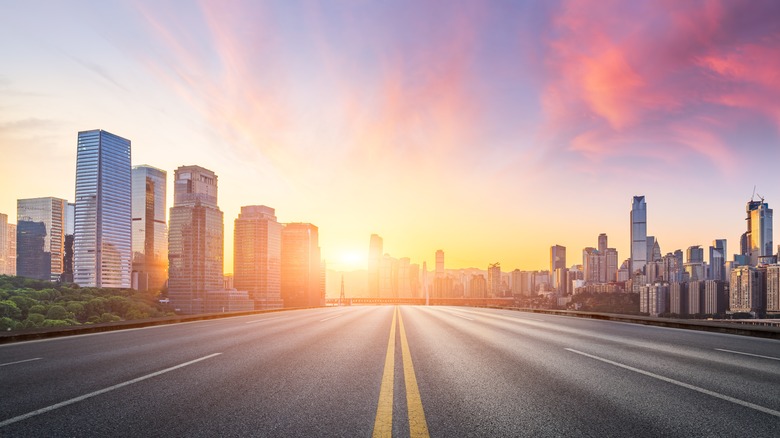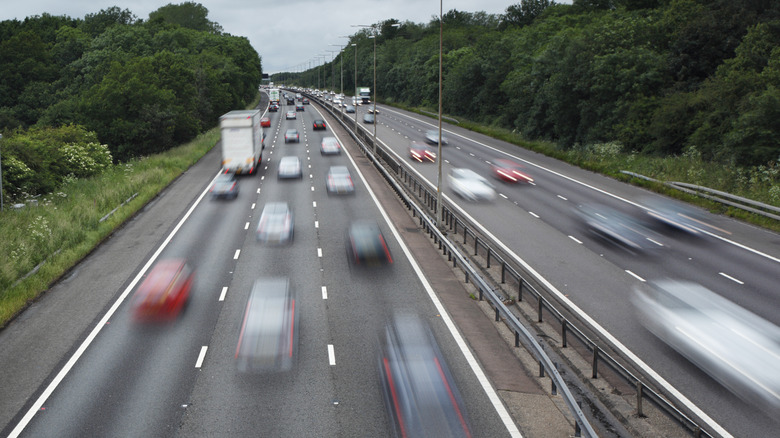Highway Vs. Freeway: What's The Difference?
Hitting the grand touring routes on your road-trip bucket list or just commuting to work — either can bring you through a wide range of road types that each seem to have their own speed limits, rules, sizes, and signage. It's easy to gloss over all of this while you're concentrating on driving, but have you ever stopped (not in traffic) to really understand the difference between a highway and a freeway?
It may seem that the terms "highway" and "freeway" are interchangeable, possibly due to different regions in the United States having their own slang for driving terms (roundabout versus rotary versus traffic circle, for example). But these are actually two different road types, according to the U.S. Department of Transportation.
"Highway" is a broad term used for a public vehicle route often passing through urban, suburban, and rural areas as they connect various locations. A freeway is actually a type of highway, used to describe a divided high-speed road with on-ramps and off-ramps — one that's meant for large volumes of traffic, as seen in major cities like San Francisco or Los Angeles, and for longer routes.
Highways and freeways have speed differences
The biggest difference you'll notice is that highways and freeways have different speed limits. Freeways usually have higher limits since they're uninterrupted, longer routes meant to make travel faster and more efficient. To keep traffic moving, U.S. freeways generally have speed limits between 65 and 80 mph, especially outside urban areas. Other types of highways, however, are often no more than 55 mph. Some highways require even lower speeds if they're smaller two-lane roads.
Another big difference between freeways and highways is traffic signals — highways have them and freeways don't. Highways need traffic control because roads merge into them at various intersections. Freeways, on the other hand, don't need roundabouts, lights, or stop signs since they don't have merging traffic.
In the U.S., there are over 4.2 million miles of highway and nearly 47,000 miles of interstate freeway — so you can expect changes as you travel, depending on the state and if you're in an urban, rural or suburban area. For example, a section of I-35E near St. Paul, Minnesota is nicknamed "Practice Freeway" due to its speed limit of 45 mph, which presumably makes it easier for new drivers. This is also the speed limit for freeways in several other places, including I-93 in downtown Boston and I-395 in Washington, D.C. Every state sets its own speed limits, so make sure to check government websites and pay close attention to signs when traveling to avoid speeding tickets.

